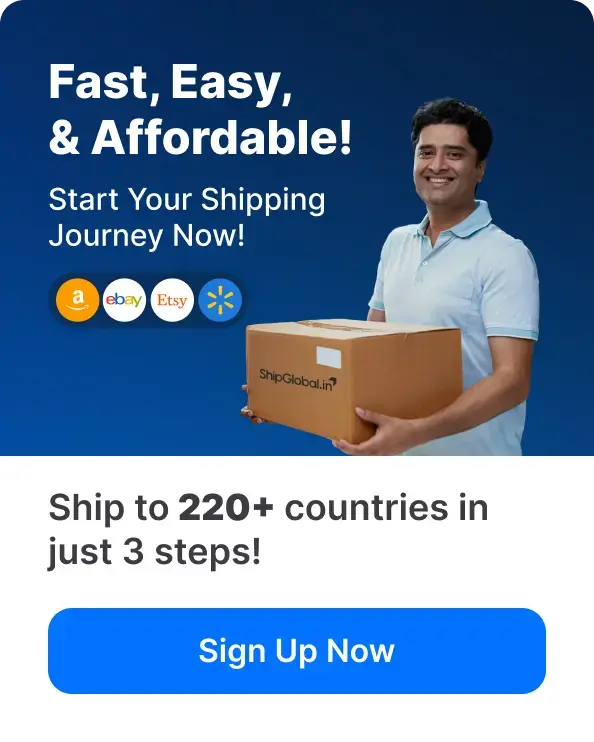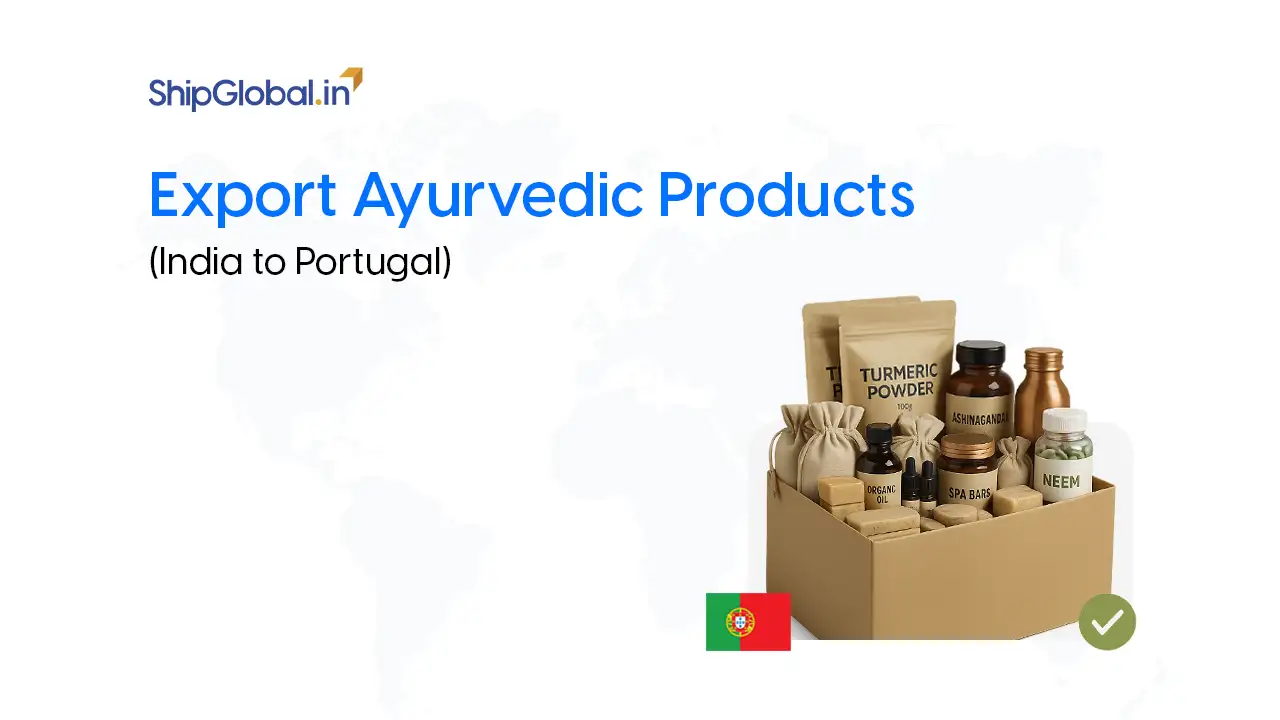Indian jewellery pieces, including coloured gemstones and imitation jewellery, are in great demand around the world.
Whether it’s Indian Kundan or handmade imitation jewellery, these pieces have gained recognition not just in the domestic market but internationally as well.
Why? It is because of their unique designs and rich heritage, and the exceptional craftsmanship of Indian artisans.
India’s gems and jewellery exports made up nearly 4.3% of the world’s total exports in 2022, lending it the status of the sixth-largest exporter. Indian cities like Jaipur offer a vast collection of handcrafted jewellery including necklaces and earrings with intricate beadwork and delicate filigree.
If you’re looking to start exporting imitation jewellery to the US, then stick with us as we reveal common mistakes exporters make—and how to avoid them.
Understanding US Customs Regulations for Jewellery
One of the biggest mistakes exporters make is not fully understanding US customs regulations for jewellery.
Countries like Canada, the USA, and those in the EU already have laws in place that specifically limit the amount of lead in children’s jewellery. The WHO even lists lead as one of the most hazardous toxins out there.
In the USA, regulations are pretty strict—children’s jewellery can’t have more than 300 ppm of lead, and when it comes to paint, the limit is even lower at just 90 ppm. California, in particular, has been taking strict action against businesses selling non-compliant products, including discount stores, department stores, gift shops, and even vending machine operators.
The key factors to keep in mind while exporting imitation jewellery to the US are:
| Category | Details |
|---|---|
| Harmonized Tariff Classification | Ensure your imitation jewellery falls under the correct tariff classification to avoid unnecessary delays or penalties. The tariff classification for imitation jewellery is HS Code 7117. |
| Material Restrictions | Some materials, such as lead and nickel, have specific restrictions in the US. Verify that your products comply with safety standards. Lead content – As per the country’s national legislation, the amount of lead in children’s jewellery should not exceed 300 parts per million (ppm). States like California have taken action against stores or manufacturers that sell jewellery pieces with excessive lead content. |
| Labeling Requirements | All jewellery must be correctly labeled with the country of origin and materials used. |
| Quality Control | Consumers may be concerned about skin reactions, durability of the product, and discolouration. Hence, these products must meet quality standards, which include: -No Peeling of the Coating -Normal Coating Colour -Secure Ear Clips -Stones Properly Set -Smooth Edges and Polished Surface |
Ensuring Proper Jewellery Packaging for International Shipping
Poor packaging can result in damage during transit, leading to customer dissatisfaction and losses. Consider these best practices for jewellery packaging for international shipping:
- Use Secure Packaging: Choose durable boxes with cushioned interiors to prevent breakage.
- Tarnish Protection: Use anti-tarnish strips or pouches to maintain the jewellery’s shine.
- Customs Documentation: Attach necessary paperwork, such as invoices and certificates of origin, on the outer packaging for quick clearance.
- Insurance: Opt for shipping insurance to protect against loss or damage during transit.
Pricing Strategies for US Jewellery Market
A common mistake when exporting imitation jewellery to the US is mispricing. Research the market to establish competitive yet profitable pricing. Key pricing strategies include:
- Cost Plus Pricing: Calculate the total cost of production, shipping, taxes, and customs duties, then add a profit margin.
- Competitive Pricing: Analyze similar products on platforms like Amazon and Etsy to ensure your pricing is competitive.
- Value-Based Pricing: Highlight unique aspects of your jewellery, such as design or materials, and price accordingly.
Understanding Import Duty on Jewellery in the US
Many exporters overlook import duties, leading to unexpected costs. The import duty on jewellery in the US depends on several factors:
- Material and Composition: Duties vary based on whether the jewellery is made of base metal, plastic, or other materials.
- Country of Origin: Some countries have trade agreements with the US that reduce or eliminate tariffs.
- Tariff Code Classification: Properly classifying your jewellery under the right Harmonized System (HS) code can affect the duty percentage.
Selling Imitation Jewellery on Etsy and Amazon
Selling across borders can be tricky, but with the right planning (and the right help), it doesn’t have to be overwhelming—especially during peak shopping seasons.
It gets a lot easier when you can hand off things like inventory planning, logistics, and payments to experts, so you can focus on your product. Moreover, specialized support and services are also available to guide you through taxes, export rules, and other regulations.
Platforms like Etsy and Amazon offer great opportunities for selling imitation jewellery in the US. However, there are pitfalls to avoid:
- Optimized Listings: Use high quality images, detailed descriptions, and SEO-friendly titles.
- Compliance with Platform Policies: Each marketplace has rules regarding jewellery materials, descriptions, and claims. Ensure compliance to avoid account suspension.
- Customer Service: Provide excellent customer support to maintain positive ratings and reviews.
eCommerce marketplaces and service providers can also help with demand forecasting, marketing, and even advertising, making the whole process much smoother.
Conclusion
Exporting imitation jewellery to the United States can be profitable if done correctly.
Avoid common mistakes like using improper packaging, misclassifying products, setting the wrong price, neglecting import duties, and non-compliance with country-specific regulations.
You can avoid these by understanding the US customs regulations for jewellery, implementing smart pricing strategies, and staying informed about the import duty on jewellery in the US.
Additionally, follow best practices when selling imitation jewellery on Etsy and Amazon to maximize success.
So, what are you waiting for? Use these tips to ship smartly and take your jewellery brand global.
FAQs
The US requires proper tariff classification, material compliance (for instance, restrictions on lead and nickel), and correct labeling with country of origin and material details.
Ensure your jewellery has the correct HS code, adheres to US material safety standards, and includes all required documentation, such as invoices and certificates of origin.
Use durable boxes with cushioning, anti-tarnish protection, and proper labeling. Also, include customs documentation for a smooth clearance process.
The duty varies based on material composition, country of origin, and HS classification. Some countries may qualify for lower or no tariffs due to trade agreements.
Popular platforms include Etsy and Amazon, both of which offer vast customer reach but require compliance with their jewellery listing and material policies.
Use high-quality images, SEO-friendly product titles and descriptions, and detailed specifications to enhance visibility and attract buyers.
Mistakes include misclassifying products, improper packaging, setting the wrong price, and neglecting import duties. Non-compliance with platform policies can also lead to account suspension.
While a general business license may be required, most imitation jewellery exports do not need special certifications. However, checking US safety and material compliance rules is essential.








